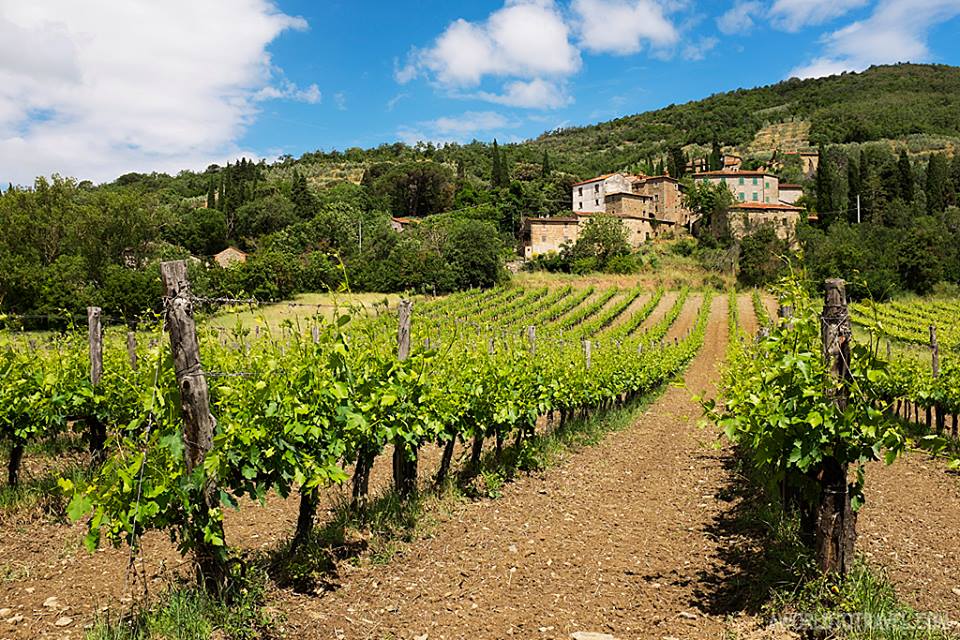TUSCANY’S HIDDEN JEM
Located on a hill just over 300 meters, Castiglion Fiorentino offers you a relaxing view: from its squares and terraces, the sight of the landscape of ‘Val di Chiana’ disappears toward the horizon.
The small village had already evolved during Etruscan times since the VI century B.C., but it was not until the Roman Empire that the area became more prominent.
Due to the fact that the soil was rich in water, the Romans decided to take advantage of this territory to meet the food needs of the city. The ‘opulenta arva’ provided tons of wheat during the Punic wars as Tito Livio reminds us.
The destiny of Castiglion Fiorentino’s territory suddenly changed during the Augustan period. The river ‘Clanis’, which flowed through the valley, was accused of being the cause of the flooding of the river Tiber and its course was therefore blocked. The landscape was deeply changed, as we can see looking at the map which Leonardo created in 1502. Perhaps made during one of his flying experiences, the drawing clearly portrays how the villages were all situated on the hills, while a big lake covered the plain. Castiglion Fiorentino was disputed by the two neighboring towns of Florence and Siena during the Middle Ages, and by the mid 1500’s it was ruled by the Medici family. Two centuries later the dynasty of Lorena drained the ‘Val di Chiana’ permanently and the valley returned back to its ancient pleasantness.
The typical country houses of this period were built within the same distance from each other and are all equipped with a dovecote: the ‘Leopoldine’ testify the lives of those who lived and worked here.
Their symmetrical layout draws the landscape of the ‘Stradone’: set at two-thirds of the ‘Sentiero della Bonifica’, this magical route over sixty km long is perfect for walking and biking throughout the entire valley.This remarkable and almost unchanged example of the particular land planning of XIX century brings you to the amazing medieval castle of ‘Montecchio’, certainly the most preserved of this region and renowned residence of the mercenary captain John Hawkwood in 1381. Represented on a stamp issued by the Italian Post Office in the eighties, the imposing construction stands out on the hills dominating the ‘Val di Chiana’. Its strict profile and its slender tower can be seen from kilometers afar.
Olives trees and vineyards are the kind framework of castles and parish churches; they paint the countryside with their green shades and play with the cherries red in May. A joy to the eyes and to the refined palates. Local tastes and flavors accompany the famous and wonderful steak ‘Fiorentina’, a very prized cut of meat, which can be obtained only by the native ‘Chianina’ breed. The ‘Val di Chio’ symbolizes the best expression of this beautiful environment: this lateral valley consists of a large network of country roads, whose central axis crosses the’ Antichi Mulini in Val di Chio’ path. The place has been thought for relaxing and pleasure. Marked by independent Agritourismos (Farm holidays) and villas, it is also known as ‘Valle di Dio’ (God Valley) because of the beauty of the surrounding scenery.
The medieval ‘Cassero’ still overlooks Castiglion Fiorentino: the historic center lies all around and retains its original features. The worthy ‘Vasari’ open gallery stands out among the monuments and there you can enjoy the view of the valley below. This medieval town of Etruscan origins is situated in an excellent geographical position, central to ‘Cortona’, ‘Pienza’ and ‘Montepulciano’; a perfect starting point to warder and discover Tuscan and Umbria delights.
Castiglion Fiorentino was also chosen as a movie set to shoot some scenes of the Oscar Winning ‘La Vita è Bella’ by the actor and director Roberto Benigni: we already have been there for you and we can confirm that life is really nice in this little corner of Italy!
Simone Faccin
Photos courtesy of ‘A World to Travel‘




